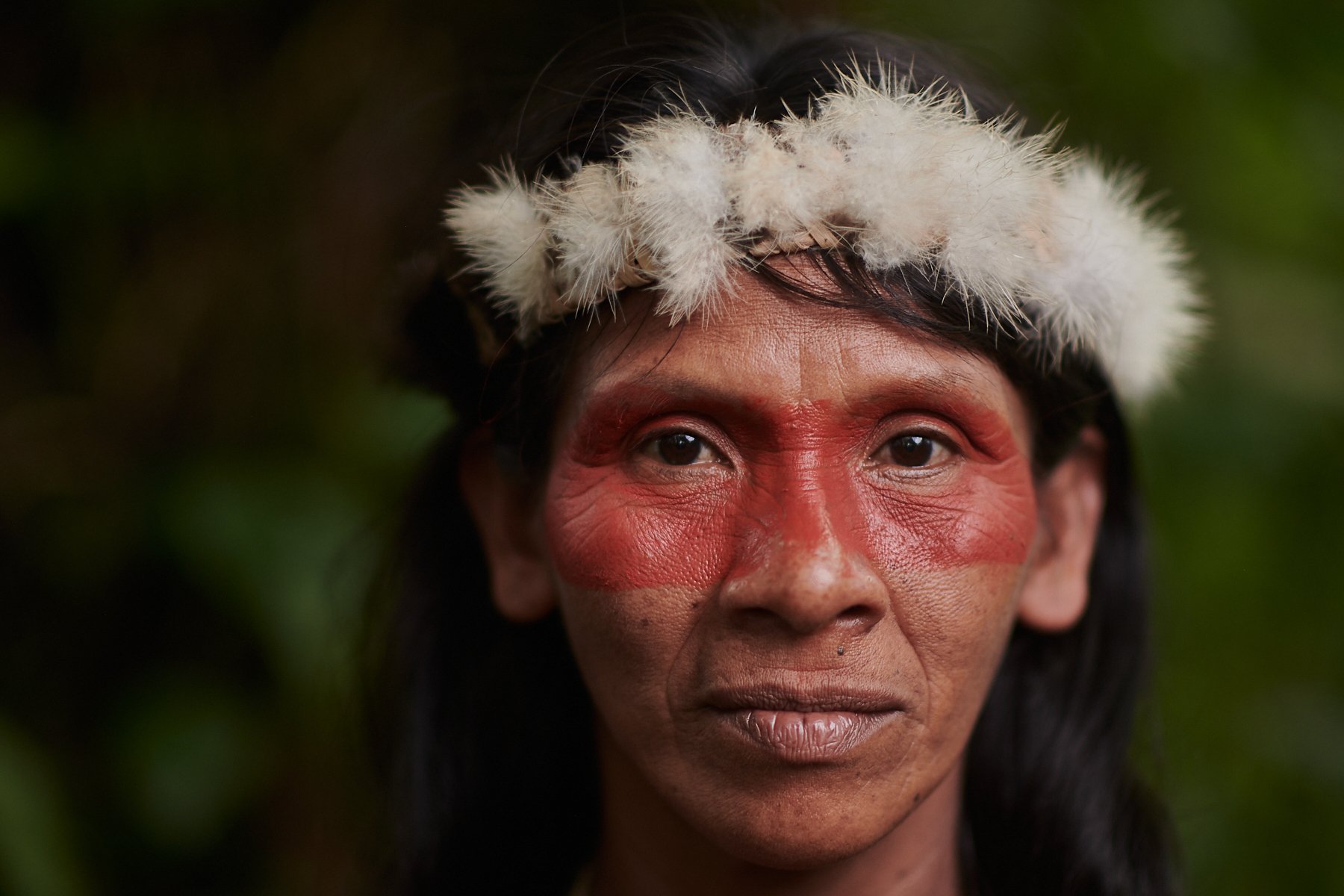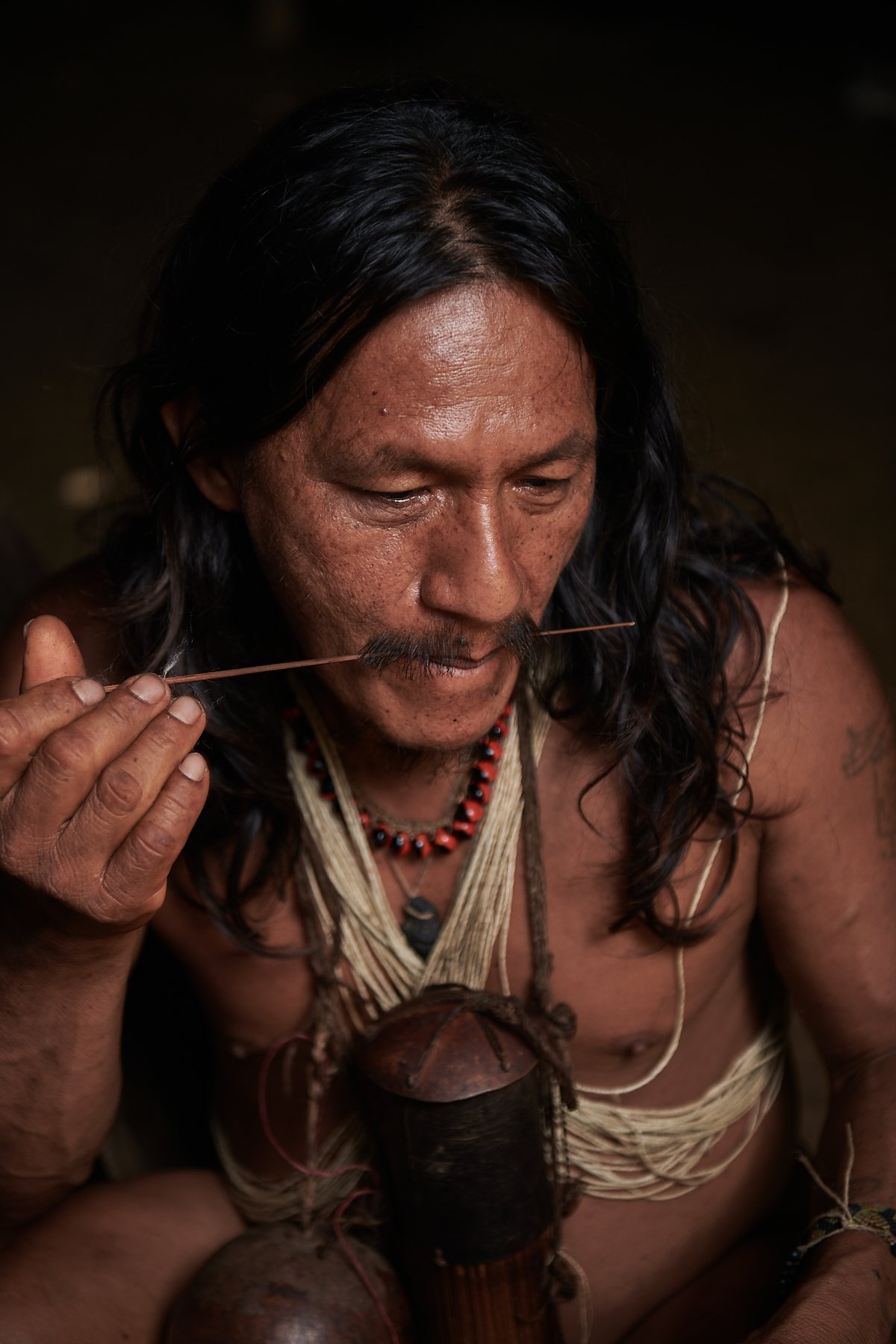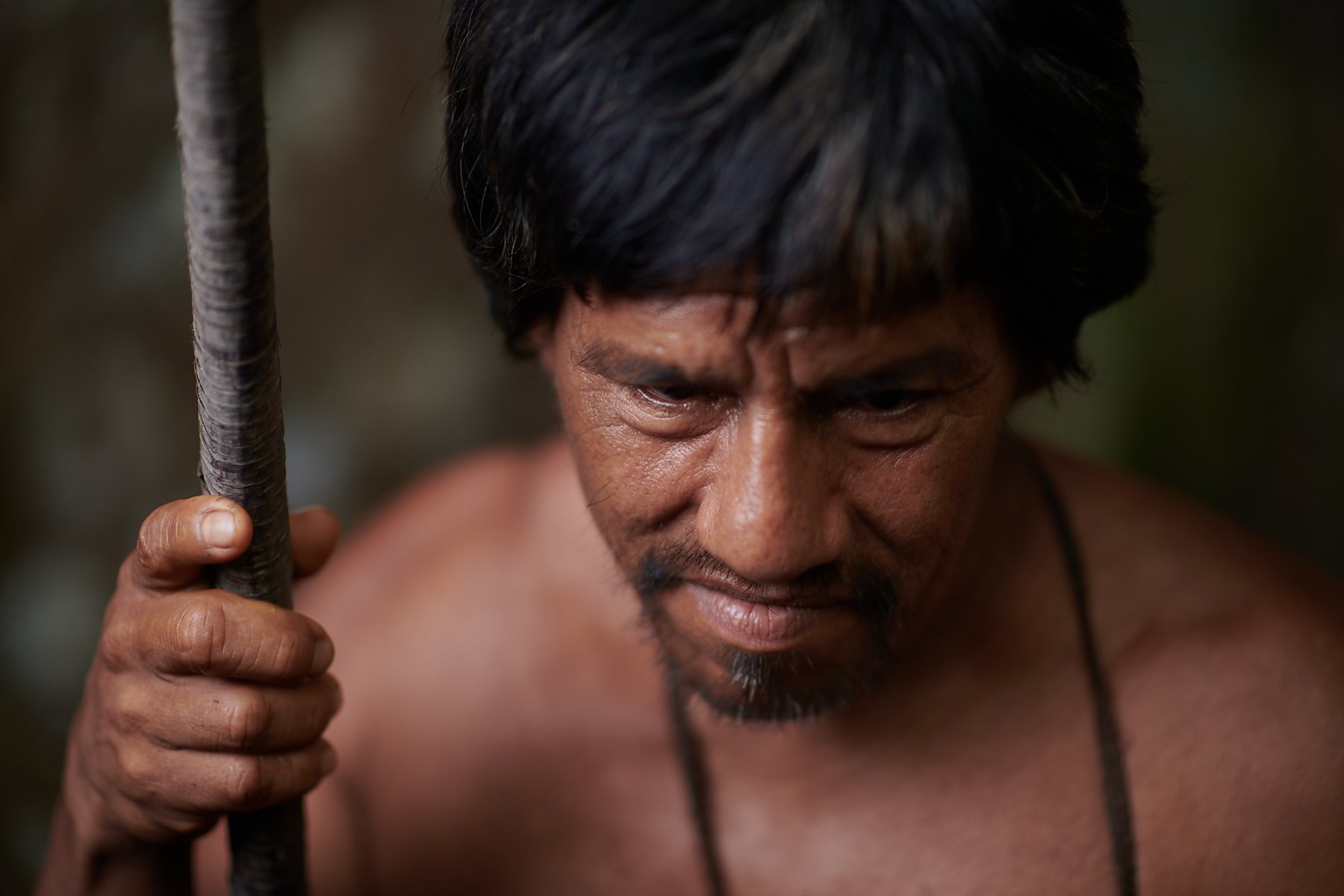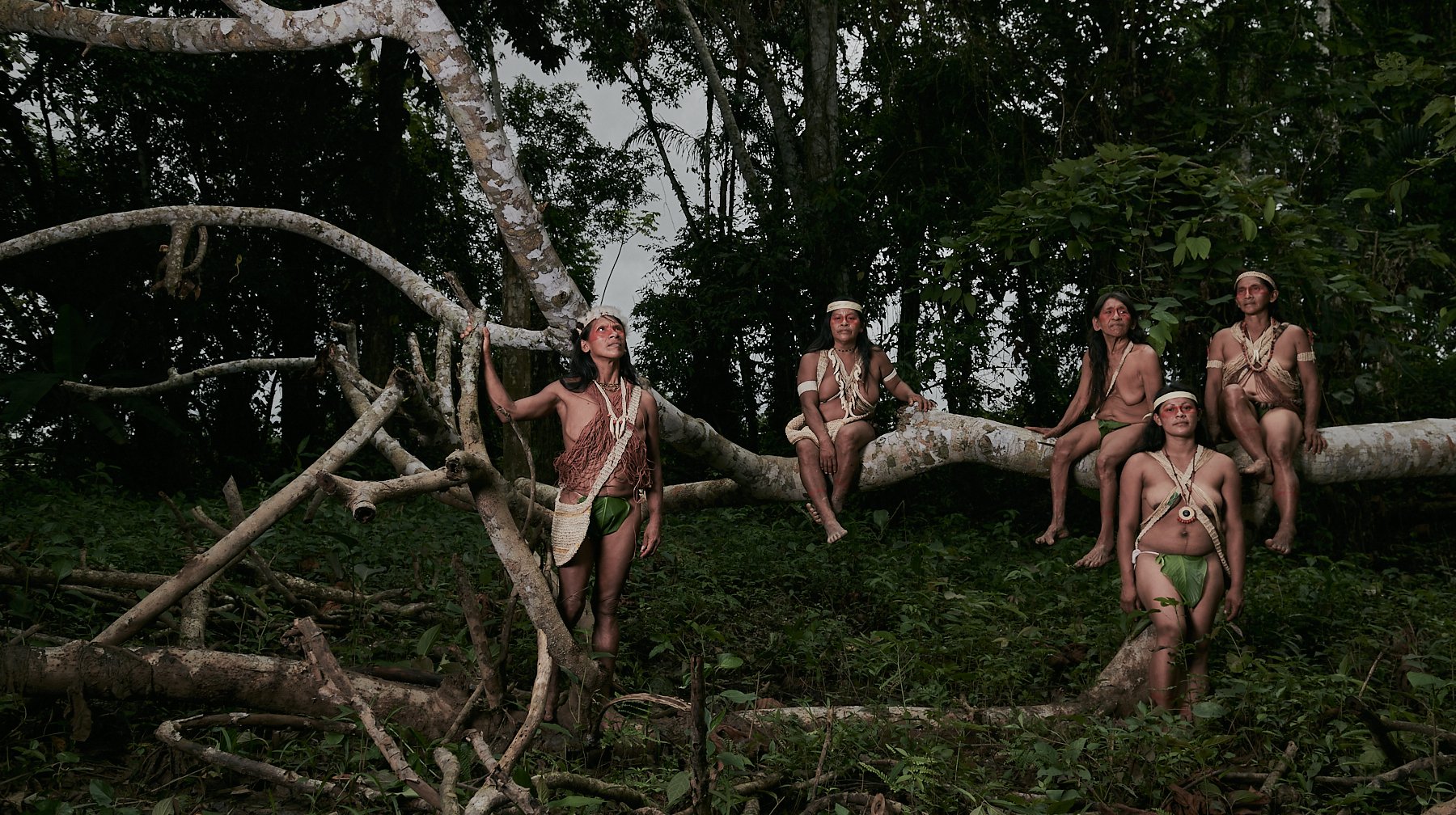(as always, after a long and complicated trip, I try and record the experience and put together some advice for photographers so as to allow you to make the most of the visit - without further ado, here it is)
Getting there
To get to the Yasuni National Park where the Bameno community live you have two options: the long and frankly uncomfortable way and the short but expensive and uncertain one! Quite a choice there, right? Let me detail these for you and you can make up your own mind:
Long and Uncomfortable: you leave from Coca and drive for 2-4hrs until you reach the boat embarkation point - then you board the boat. Now, when I say “boat” don’t rush to think of anything remotely comfortable and safe - it’s a long canoe with an outboard motor, fibreglass over old wood (most of the time) and you’ll be spending a LOT of time there: 3hrs on the first day, until you reach the first stop where you should expect to camp on a little tent, usually in the mud and then, the following morning, another 12-15hrs (depending on the river level and other conditions) until you reach Bameno. If all goes well, you’ll reach Bameno by evening - maybe 6 or 7pm, assuming, that is, normal weather. If the river is low, well, that’s another matter altogether - we’re talking 20hrs or more, with arrivals sometimes coming in well after midnight. Oh, and if you get caught in the rain while travelling, well, you’d better have a large enough poncho and enough garbage bags to cover your baggage…and be prepared to bail. But on the positive side, you leave and return (well, start your return journey anyway) whenever you want - no dependency on weather. Which is not the case with the second way.
Short and Expensive: under this plan you take off in a tiny Cessna from Shell (a small town about 4hrs north of Coca) and fly for about 1hr and 20 mins south to a tiny, 800m grass landing strip next to Bameno. Sounds quick and easy, right? Wait until you hear the whole story. First, a flight can only carry around 300kgs (and that’s everything, the three passengers, all their luggage, water and any provisions you will need) which means that once you deduct your weight and your camera gear, water and a couple of other things, there’s very little room for clothes. Another thing is the weather-imposed limitations: the flights will not leave if there’s even a slight hint of rain. Not only at the take-off area, but also at the destination and every point along the route. By the way, when I say rain I mean any weather other than Saharan sunshine is a reason for the flight not to take off - and this being the Amazonian jungle, well, let me say, I would not bet any money in it not raining. So, if you choose a flight be ready to pad your journey with a day or so either way JUST in case you need it.
Waika, one of the Huaorani female elders
Staying in Bameno
Bameno is a community village. Yes, a bit more organised than some of the oft-visited African villages but it’s still a village in the middle of the jungle. Until a few years ago (around 3 or 4 I think) the village comprised of palm-roofed huts and visitors would simply stay in tents around the main huts. These days, the community have built a couple of wooden houses, each capable of housing between 6 and 8 guests in “rooms” of two each. These “rooms” have no windows and no real partitions to speak off, but they contain single beds (essentially a very rough construct of wooden planks with a very basic mattress and a really good mosquito net over it) and are mostly waterproof - I say “mostly” because the roof is still palm fronds and they do leak when it rains heavily.
But it is inside and to a photographer who wants to be able to clean his camera and have a dry place to organise his things, these places are an absolute haven from the sun, rain and mud. Also the mosquito nets are much better than pretty much anything you can bring with you, so save the weight and expense.
The village also has a covered communal area - think of it as a covered restaurant, with two long tables and benches, where you will have your breakfasts, lunches and dinners. For visitors, there is usually someone from the village who serves as a cook - in our case it was the awesome Tepena - who cooks and prepares everything for you. This is also the area where wifi is available! Yup, I did say wifi. Let me explain.
About 4 years ago, an NGO installed 6 medium-sized solar panels on one corner of the village, along with a few batteries to store electricity. Now, in the summer months, where there is plenty of sun, the village gets limited electricity for about 5-6hrs a day, but in the winter, there may be days with little to no sunshine, so do not count on any electricity. The same NGO also delivered a small petrol power generator and installed satellite wifi. For those of you connecting the dots, I’m sure it has already happened: no electricity, no wifi. So, yes, the village does have wifi but only if there is electricity. As to the wifi speed, please do not expect anything special: it’s enough to check your email (maybe) and maybe do quick social media overview. Do not count on accessing your OneDrive and download documents, do not count on sending attachments and do not expect to stream video or spend your time watching YouTube videos. And please, please, consider the people of the village: the wifi was installed to allow the Huaorani to contact their lawyers and the various NGOs who’re helping them in their struggle (see below and also here) and not for you to chat to your friends and FaceTime around the village.
Photographing the Huaorani
…is one of the most awesome, easy, smooth and beautiful photographic experiences I’ve ever had. There are literally dozens of amazing spots all over the village - from jungle areas to river spots to abandoned huts and everything inbetween within 4-5’ of your hut and the Huaorani are always happy to work with you to capture any image you want to. But the awesomeness does not stop there. Bameno is on the Kona-Nako river and on the river you can access some truly amazing places and the amazing thing is that the Huaorani will take you to all of them if you ask: small corners with trees more than 40m in diameter and over 100m tall, small side rivers leading to tiny inlets with overhanging trees, areas with hidden streams and waterfalls and much more. It helps if you have some idea of what you want to capture, some sketch, reference photo - anything to show them your vision and then they will take over and show you the place to turn your vision into reality.
Peinty preparing the cotton end of a poisonous barb, used for hunting monkeys and birds
For the Huaorani, posing for photos is not the chore you can sometime see it being with a lot of the African and Asian tribes these days (even though, I have to admit, I have traditionally been either extremely lucky or blessed with my experiences to date, but I have also heard some truly horrible stories - and seen the resulting photos to know how true these stories are!) - the Huaorani enjoy every moment, chatting amongst themselves as if you’re not even there, laughing and teasing each other and having a really good time (while you’re there, sweating profusely, choosing lenses, setting up and trying to capture the shot you want). But you cannot but enjoy yourself being among them - sometimes, the hardest thing you have to do is try to get them to stop smiling so you can take a stronger picture.
There is no idea too weird or crazy the Huaorani will not work with you to realise - from the oldest men and women to the youngest children, they will listen and do their best to help you take the picture you have in mind. Usually your guide/fixer will help with the language (maybe even through the help of one of the Huaorani men or women) and with the details, but on matter how, it’s incredibly simple and easy. And, frankly, incredibly photogenic.
Oh, and be prepared to hike - most of the better places do require quite a bit of a hike through the jungle, over tricky roots and branches, up and down slippery and muddy paths, under rain and intense heat and humidity. In that, please be careful - there’s a lot of mulch and fallen leaves and every step is tricky.
Technical considerations
If you travel either during or at the tail-end of the rainy season, you will be mostly blessed with cloudy skies and that wonderful, soft and diffuse light. Shooting pretty much anywhere is really easy and you don’t have to “fight” with the extreme sunshine which otherwise plagues the region. The diffuse light offers a myriad of creative possibilities, especially if you choose to work with strobes - there’s little to no need for either an ND filter or even to venture into High-Speed Sync territory. Shutter speeds of 1/100th of a second or even slower are easily available to you, even with wide open apertures and you need not push your strobes much to achieve really interesting results. And this is an important point: because most areas you will be shooting in the jungle and there will be a LOT of things all over the place - branches, lianas, leaves etc etc., so shooting at f/8 will create a jumble of elements in your shot detracting from your subjects. Of course, it all comes down to what you’re looking to achieve, but this was one thing I found I had to address a few times.
I took my trusty Godox AD1200 kit with two octaboxes: the 120cm and the 165cm - the former with a grid. Even though I carried 2 additional batteries with me, the ambient light meant I could shoot at 1/8th power most of the time (dont get me wrong, some of the group shots did demand the full power) so at the end, I used less than one battery (without resorting to recharging). However, I am 100% certain that if you arrive during the dry season, even 1200ws at full power may not be sufficient to balance the fierce equatorial sun. On the subject of sun - it can actually make your life quite hard (and not just because of the heat). Shooting under a full canopy of trees will protect you but will also allow really intense shafts of light all the way down to your subjects - myriads of them. This creates a really complex lighting matrix for you (and your camera), with many uncontrollable highlight points and corresponding shadow points - if you try to manage them in camera, you’ll either blow the highlights or create really dark images (which you’ll then need to fix in post - definitely not ideal). There’s very little you can do, but whatever you end up doing, PLEASE avoid using a reflector from the bottom: there is no bounce-up in the jungle and your images WILL look insanely fake.
Depending on your gear, I would advise you purchase and carry with you a large (4kgs) bag of rice - it can prove invaluable in drying out your cameras and lenses if/when they get either soaked or misted. Personally we didn’t come across these issues (the D5/D4 and D850 are perfectly weather-sealed so had no issues, but a pair of photographers and videographers we met on our first day there had enormous issues with this across their Sony and Fuji mirrorless cameras - and before you start screaming, they had the issues with their a7R IV, a7 II and all their Fuji bodies. Those things would spend all night every night in the bag of rice next to a cosy fire to fight the moisture.
I would also advise investing in a good camera cleaning kit - not talking sensor cleaning here, more camera cleaning. There is a LOT of mud there - there’s mud everywhere, including places you wouldn’t expect it. You camera will, almost certainly, get muddy and this mud gets everywhere. I was actually unlucky enough to take a massive tumble down a 10ft slippery slope and let me tell you, mud got everywhere, including the inside of my bag and in almost all crevices in my D5. If I didn’t have my cleaning kit I would have serious issues. This is what my cleaning kit includes:
two toothbrushes (a hard and a soft)
4 microfibre cloths, 2 very large ones I use for external cleaning and 2 smaller ones, better quality, I use for glass surfaces and lenses
cotton earbuds (I usually pack around 20-30)
a mini can of WD40. This is by far my biggest life-saver. The WD40 can quickly clean everything quickly, with no residue, 10 times better than water or even wet wipes.
My kit contains other things too, but the above are the heavy guns and I had to use all of them in the Amazon. Putting together a cleaning kit is extremely cheap and easy, weighs next to nothing (if you’re interested, please have a look here for the full contents of my kit) and can be a life saver.
The women of the community after a ceremony
The moral of it all
However, having seen the images coming from other photographers from that part of the world and even speaking to some of them, I feel a few words of caution may be needed here: this is not a place for “photo tour groups” where an “experienced” photographer “leads” other photographers into a jungle foray to pad their portfolios and “get the photos of a lifetime”. Sure these things happen (and undoubtedly will continue to happen) and Peinty, the village leader, told me of quite a few stories of situations like this, not a single one flattering for us photographers! This should be a source of concern for all of us.
To help you understand how important this is, please bear in mind the following: one of the main reasons this particular community is encouraging visitors is to help sensitise people to the strife of the Huaorani and to promote their culture. They do this knowing full well the risks to their way of life so you must respect that and them. Sure, take the photos you want but be respectful, be nice, interact with them - be human first and photographer second! When they head out to fish, offer to join them and help - it’s easy and, ultimately, a lot of fun. Plus, you help the community catch fish for dinner (when we went, yes, we did spend 3hrs in a boat under the sun, but we caught enough fish to feed 6-7 families - even I caught 3 - and this made a difference in bonding with the tribe!) Offer to help clear the table after a meal and - and I shouldn’t have to say this - bring them gifts.
We spent a couple of hundred bucks on small gifts for the village and, now that I know the effect they had on the tribe, I really wish we had spent more: we got high quality fishing hooks for the men (I mean, 100 hooks cost something like $15, so we bought them around 400 of them in various sizes) and seeing them distribute them with enormous care amongst themselves and the joy it brought them was awesome. We also bought around 2kms of high quality fishing line (which was equally quickly distributed and much appreciated as they mostly rely on twine lines which break very frequently). We got around 30 notebooks for the children along with 60 pencils and 3 boxes of coloured crayons - we gave them to the teachers who will make sure they are distributed as needed, but you could see the excitement in their eyes. And we bought about 15 combination combs/brushes for the women - and yes, when I was advised by our guide to get this I too thought it was such a condescending gift, but when I saw how quickly they used them and the laughter as they were combing each other’s hair, I actually felt bad I hadn’t gotten more. While all this certainly added around 5-6kgs to our luggage, now that I’ve done it I wish I had packed a few less clothes and added a couple of multitools for the men and a few more things for the women and children. This is not just about getting them things they “cannot have”, but showing them, in some way, appreciation for the immense hospitality they are showing you.





